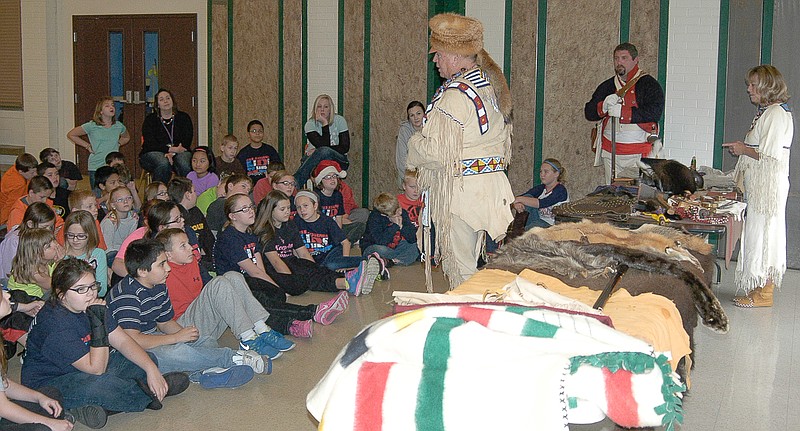California fourth graders were treated to a visual history lesson without video Friday, Dec. 19, in the elementary school multipurpose room.
Bob Staton talked about the Lewis and Clark Expedition (or Voyage of Discovery) of 1804-06, explaining that it was a military expedition, beginning on what was the Western Frontier, St. Louis, which at the time was known as the Gateway to the West.
The Missouri River at the time was not channelized as it is now. It was very wide and relatively shallow, making it easier to pole the large keel boat up the river.
Staton was dressed in what he described as a typical "work uniform" of the military, which was made of tanned animal hides. His wife Debbie was dressed much as Sacajawea, the Shoshone woman who served the expedition as interpreter.
Elementary Principal Daniel Williams was outfitted in what would have been the uniform of an officer or sergeant on the expedition. Although those uniforms were not worn on the expedition, they were donned by those meeting with tribal chiefs along the route. For these special occasions, the chiefs would also dress in their finery.
Staton described the equipment and supplies carried on the expedition, including the flintlock military musket and bayonet, knives, shaving gear with straight razor, mess kit and canteen, "possibles bag" and more. He also described the air rifle taken on the trip. It had to be pumped up, but was rapid fire and impressed the Indians with its lack of smoke and noise.
On hand was a large selection of animal skins, glass beads, metal utensils, knives, axes pipes and other items in demand by the tribal people.
Staton commented on the trading between the peoples. Although some think that the Indian peoples were cheated since they traded leather skins for the beads and steel knives, axes, pipes and pots, Staton pointed out that while leather was expensive and highly sought after in Europe, the beads and metal goods were priceless to the Indians, who thought they got the best of the trade.
Near the end of the program, Staton held up various of the animals skins which were identified by the young people, for instance, raccoon, fox and badger.

